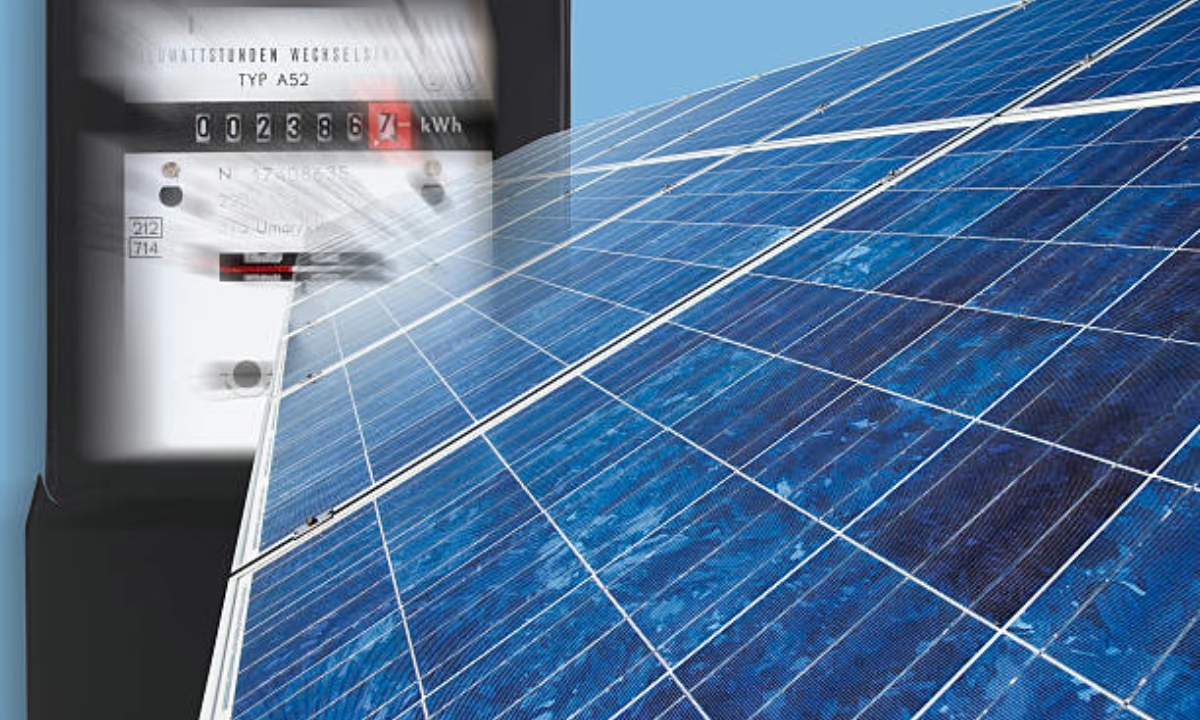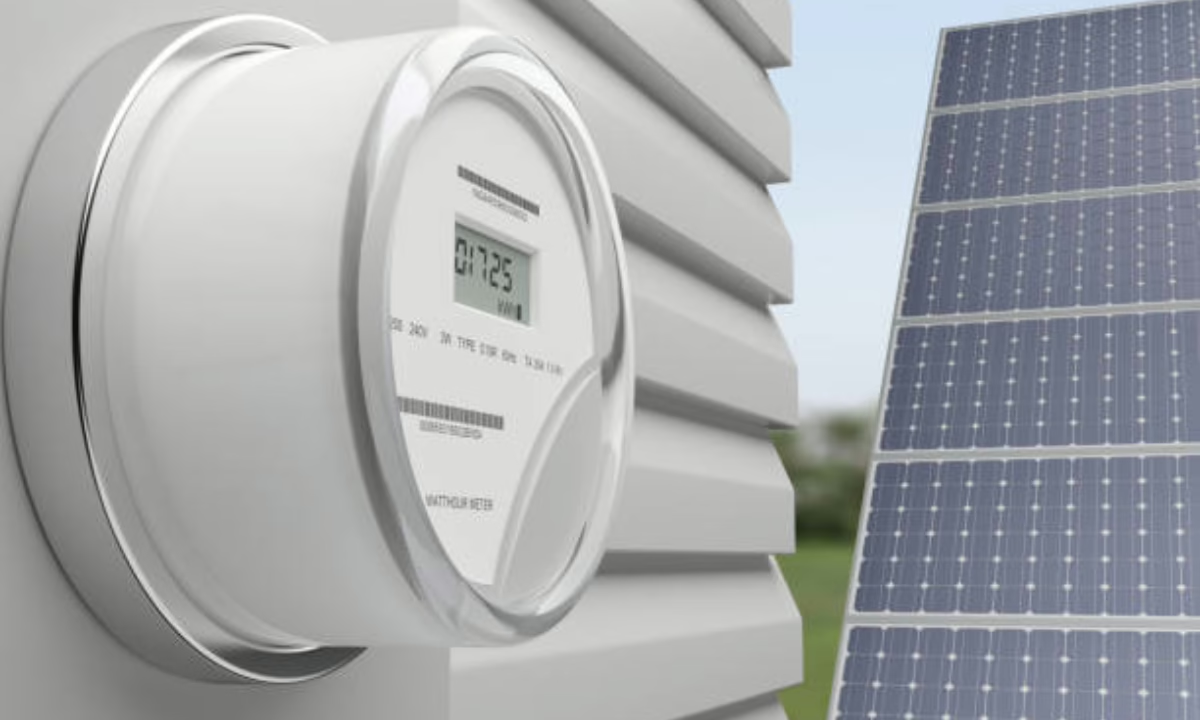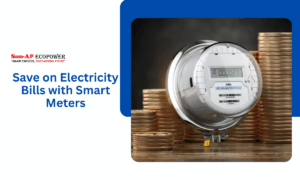Understanding Net Metering
Net Metering is a billing mechanism that credits solar energy system owners for the electricity they add to the grid. When a solar energy system generates more electricity than the user consumes, the excess is exported to the grid through a solar meter, and the user earns energy credits. These credits can later offset electricity drawn from the grid during low solar generation periods.
How Solar Net Metering Operates

At the core of solar net metering is a bidirectional meter that records both the imported and exported electricity. During daylight hours, when the solar panel system generates surplus power, the excess is sent to the utility grid. This exported power is tracked and stored as energy credits. At night or during cloudy weather, the user can draw power from the grid, utilizing the previously accumulated credits.
This seamless exchange of energy ensures consumers only pay for their energy metering usage – the difference between the energy consumed and the energy produced.
Key Components Involved
To establish an efficient solar power net metering system, several key components are essential:
- Solar Panels: Devices that convert sunlight into electricity.
- Solar Inverter: Converts direct current (DC) generated by panels into alternating current (AC) used in households.
- Bidirectional Meter: Tracks both incoming and outgoing electricity.
- Utility Grid Connection: Facilitates the import and export of power.
These components work together to ensure optimal functioning of the solar net metering system and to provide cost-effective, clean energy.
Installation Procedure for Net Metering in India
Installing solar power net metering in India follows a structured process regulated by state-specific electricity boards. It generally involves:
1. Applying to the local electricity sub-divisional office.
2. Conducting a site inspection for rooftop feasibility.
3. Receiving system approval from the concerned authorities.
4. Signing a net metering agreement.
5. Installation of the system and final inspection.
Every state may have unique policy nuances and documentation requirements, but the central framework remains similar across India.
Cost Considerations
The cost associated with net metering depends on the size of the solar setup and the type of meter installed. Generally, users pay:
- An application fee.
- A registration fee based on system capacity.
- Charges for the solar meter (which varies for single-phase, three-phase, HT, and LTCT meters).
These costs are nominal in comparison to the long-term savings enabled by solar power net metering.
Types of Solar Meters Used
A variety of solar meters are employed to facilitate net energy metering, including:
- Single-Phase Net Meters
- Three-Phase Net Meters
- HT Net Meters
- LTCT Net Meters
These meters ensure accurate energy tracking and compliance with utility standards.
Advantages of Net Metering
Implementing net metering systems offers a wide range of benefits:
- Financial Savings: Reduces electricity bills significantly by allowing energy credit accumulation.
- No Need for Battery Storage: Makes battery storage optional, thus lowering upfront costs.
- Environmental Benefits: Promotes clean energy use and reduces carbon emissions.
- Low Maintenance: The systems require minimal maintenance post-installation.
- Policy Support: Many state governments offer subsidies and incentives to promote adoption.
Net Metering Policy Across Indian States
Each Indian state adopts customized policies to encourage solar net metering:
- Delhi aims to generate large volumes of electricity via solar installations across government buildings.
- Maharashtra and Punjab have been active in implementing metering systems to reach renewable energy targets.
- Karnataka offers tariff incentives for systems ranging from 1 kW to 2 MW.
- Haryana provides online registration and financial support for domestic consumers.
These state-level policies indicate a strong national push toward net energy metering as part of India’s renewable energy mission.
Monitoring and Performance Metrics
Real-time monitoring is essential to evaluate the efficiency of a net metering setup. Users and utilities rely on meter data to:
- Track consumption and production ratios.
- Identify performance bottlenecks.
- Optimize usage patterns.
- Improve load management.
This transparency improves trust between consumers and electricity providers and enhances the overall effectiveness of the system.
The Role of Secure Meters Distributors in India
As demand for solar meters rises, the availability of accurate and durable meters becomes crucial. Secure Meters distributors in India play a significant role in supplying high-quality, certified net meters across residential and commercial installations. These distributors ensure compatibility with grid requirements and aid in maintaining data accuracy for billing purposes.
Conclusion: Net Metering for a Smarter Energy Future – Powered by SUNAP
As India accelerates its renewable energy mission, net metering continues to be a vital component of smart energy systems. It not only supports eco-friendly power generation but also empowers consumers to manage their energy needs cost-effectively. With policies becoming increasingly favorable and technologies evolving, solar net metering has become a mainstream solution for households and businesses.
Organizations such as SUNAP are at the forefront of this transformation. As a leading name in the solar and energy metering domain, SUNAP delivers scalable, innovative, and compliant solutions for solar power net metering across India. Their commitment to accuracy, compliance, and energy efficiency makes them a trusted partner for a sustainable future.
Whether you’re a house owner, commercial entity, or an energy-conscious citizen, embracing net metering through reliable support from companies like SUNAP ensures not just savings but also a cleaner planet for future generations.




